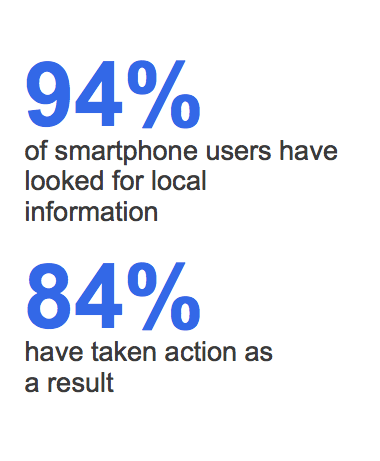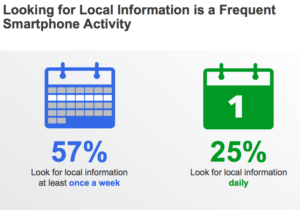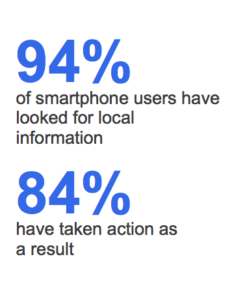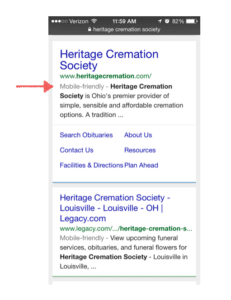
Do you already have a mobile-friendly web design? Better be sure of that! On April 21, 2015 Google’s mobile ranking factors will kick in. Those who do not have a mobile friendly site will begin to see a “significant impact” in their search results, according to Google. This roll out will happen over the course of a week and will be a “Yes/No” on whether your site is mobile-friendly or not, there are no degrees of mobile-friendliness in this algorithm.

Mobile is something we all should have been paying attention to anyway. According to a survey sponsored by Google and Ipsos MediaCT, smartphones have become an indispensable part of our daily lives. Smartphone penetration has risen to 56% of the population, and Smartphone owners are becoming increasingly reliant on their devices. In 2013, it was reported that 67% of smartphone users accessed the internet everyday on their phone and most never leave home without it. These number have undoubtedly risen.
Google is now stepping up the game with this update by ‘requiring’ businesses to have a mobile friendly website to be found in mobile search results. And it makes sense: Google wants to deliver results that their users can be happy using. As a business, you should have the same goal! Make your site easy for people use, and they will use it. To be clear, this will mostly likely only affect non-branded searches done through Google on your browser or the Google App. Those searching for branded terms will likely not see any changes in the results.

So how do you make sure you’re ready for April 21st?
Usually updates come up with little or no notice, but Google said it wanted sites to prepare; so, you have some time to make your website mobile-friendly which is a big benefit for business owners. Assuming you have a mobile site already some of the usability issues can be quickly fixed to comply with what Google is looking for. We do offer web design services that can quickly identify any issues, and affordably provide you with a solution. If you don’t have a mobile site at all, we can help with that too.
Identify Mobile Usability Issues

Identifying the issues that are keeping the site from being mobile friendly can be done quickly with a few tools Google provides. Each one of these tools offers varying features and should be used in tandem to assess current issues with usability. Google Webmaster tools will give you the specific items Google is looking for and alert you if the site is not in compliance. It’s also important to understand the potential impact on traffic, which is why I suggest looking at current mobile traffic. Understanding how these mobile visitors are getting to the site and what they do while they are on it will help in making decisions on improving the usability. Identifying landing pages, exit pages, and other metrics will provide information on hurdles users faces and potential areas of improvement.
- Site validation: Validate your site with Google’s mobile friendly test tool. It’s important that all the elements of your site are crawl-able.
- Current user behavior: Google Analytics provides a wealth of information on mobile users. Identify how they enter your site, where they land, what they do and where they convert. This information will help you understand any hurdles they are facing.
- Search appearance: Google Webmaster tools will show you what queries your pages are showing up for, what position they hold and which search results these users click. There are features with GWT that will alert you if Google finds usability issues and provide some guidance on the what to fix.
As with most Google updates there tends to be a “freak out” moment where we wonder if we’re going to make the cut. Remember this one simple rule, one that I live by, Don’t optimize for Google! Optimize for the user. If your site is built with user experience at the forefront, then you have nothing to fear. My colleague Jackie Baker has written extensively about The Best SEO Strategy is Always About Your Customers (Not Google).
Sanctuary Marketing Group is ready to assist businesses to make sure they don’t lose rankings and quality traffic on mobile searches after the change is made. Contact us at for a free consultation.
Most Popular Articles

Seeing Favicons in Your Google Search Results? Here’s Why…
Have you noticed anything different in your Google Search results lately? Google added tiny favicon icons to its organic search results in January. It was…

Business Growth and Digital Marketing News & Tips 4-14-24
Did you know? It’s five to twenty-five times more expensive to acquire a new customer than to retain an existing one. Increasing customer retention by…

Business Growth and Digital Marketing News & Tips 3-28-24
With the desire for precise measurement tools to determine ROI, there has been a rise in attention metrics. These metrics, which often utilize eye-tracking data,…








